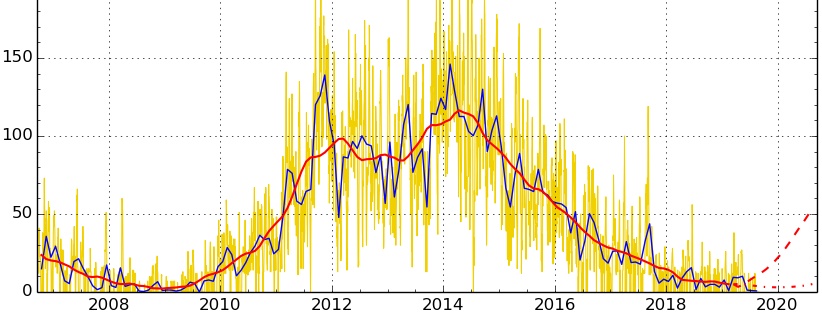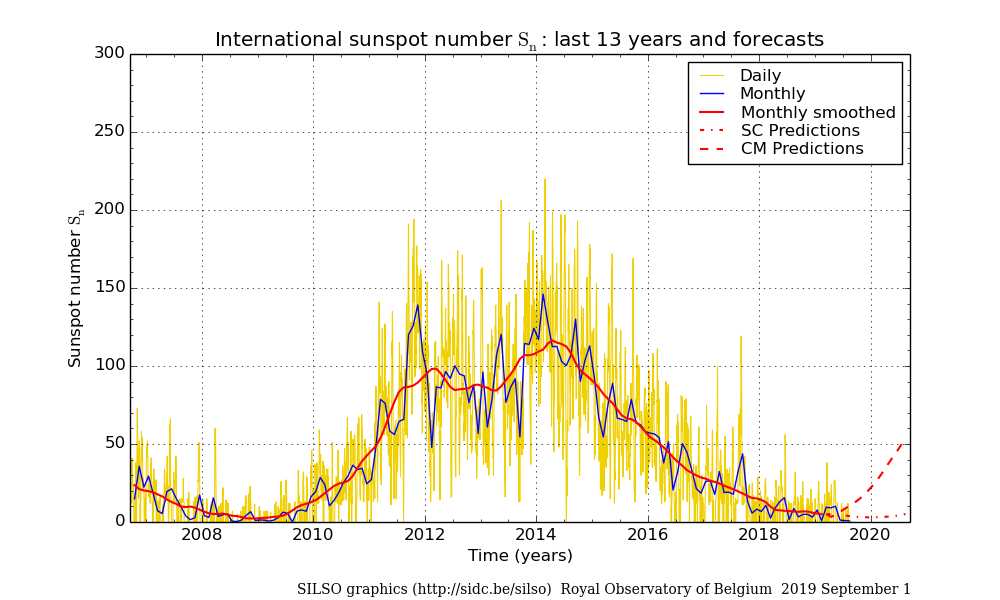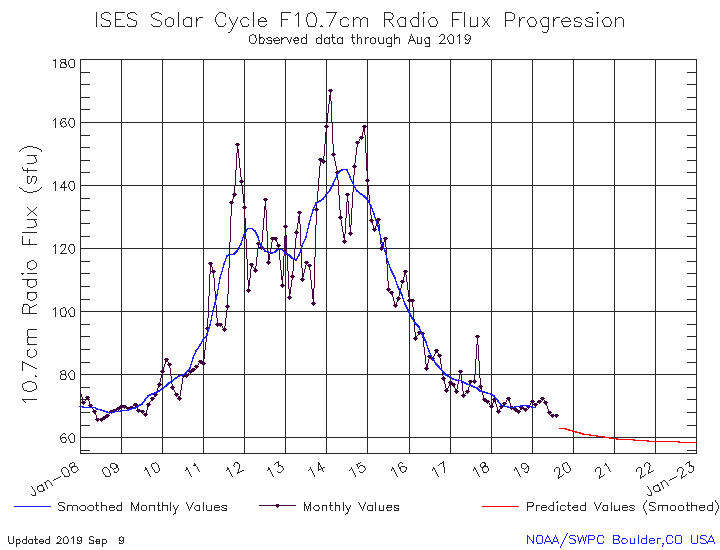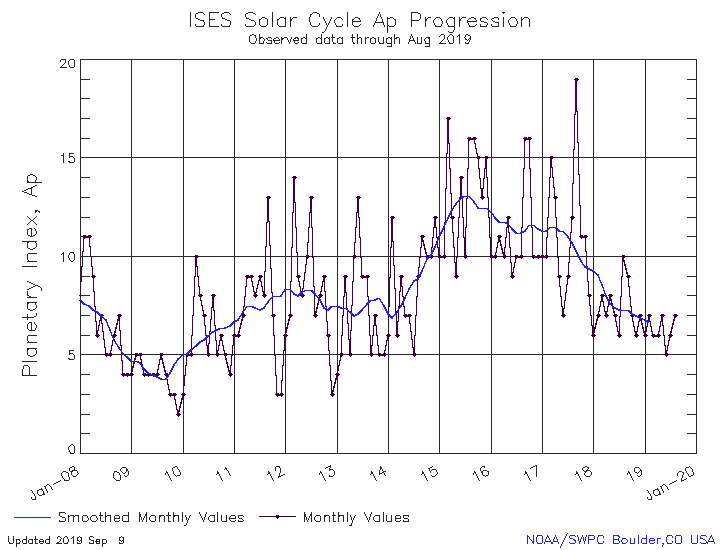Century-class Solar Minimum in progress

The Sun was blank more than 89% of the time from June 22 – September 22, with only 6 brief and tiny sunspots and not a single significant solar flare during this period of extreme quiet, Dr. Tony Phillips of the SpaceWeather reports.
"This is a sign that Solar Minimum is underway and probably near its deepest point," Dr. Phillips said.
"For 2019 overall (January through September), the Sun has been blank 72% of the time, comparable to annual averages during the century-class Solar Minimum of 2008 (73%) and 2009 (71%). The current Solar Minimum appears to be century-class as well, meaning you have to go back to the beginning of the 20th century to find lulls in solar activity this deep."
.png)

During the Solar Minimum phase of the solar cycle, sunspot and flare activity diminishes, the Sun's magnetic field weakens, allowing cosmic rays to enter the solar system; streams of solar wind punch through the Sun's weakening magnetic field, lashing Earth with gaseous material that can cause geomagnetic storms; the Sun also dims, especially at extreme ultraviolet wavelengths, causing the upper atmosphere to cool and collapse.
.gif)


Featured image credit: SIDC/SILSO

Thanks for the reminder…here’s a link I’ve saved.
https://www.swpc.noaa.gov/news/solar-cycle-24-status-and-solar-cycle-25-upcoming-forecast
https://www.swpc.noaa.gov/news/solar-cycle-25-preliminary-forecast#
This works looks impressive…from India
http://www.cessi.in/solarcycle25prediction/
Of course the GSM guys are a vocal minority….don’t agree with them…but then I don’t agree with a lot of folks about a lot of things. Hahahahahaha….
The Indian prediction is very close to what Dr Svalgaard from Stanford has on his prediction. He was one of the few solar physicists to correctly interpret the strength of SC24. This is going to be interesting to see how it works out. I don’t have the ability to assess the strength or weakness of solar cycles. The connection with major flood level winters on the West Coast was my main key to assessing future patterns of the sun.
The SC prediction has the right track, imo. In March of 2014 I correctly stated that the solar minimum would start at the end of 2016, during the winter of 2016/17. I also stated that the minimum would end in 2020. All of that went with my main focus which was on the theoretical flood cycle of the West Coast/Pacific Northwest. I made 3 predictions. The main prediction was that the winter of 2016/17 would be a well above average rain/snow winter for the PNW, bringing rains which would cause river/stream flooding in worst hit areas. That was the winter where the Oroville Dam came under threat of losing both of its spilways. At the peak of that around 250,000 valley people evacuated the area.
Part II, was that the ENSO regions would be negative/La Nina, and the third was the correct solar cycle prediction. So I hit a trifecta. I believe that I can now detail fairly accurately when all of this will once again take place, ie, forecast the next solar minimum, the state of the ENSO at a particular time, and winter conditions for the Pacific Northwest in a particular future winter
Interesting how Earths warmest years on record have happened over the last 5 years as the solar minimum intensifies.
Suggest you look up the 1930s. Nothing we’ve seen in the last 60 years even come close!
Even during the deepest point of Solar Minimum, sunspots can be formed in a short period of time and a massive solar flare would take place and that will happen for sure if not this year then next year. Although, in 2018 there were 221 spotless days and the Sun was in a deep Solar Minimum, a huge sunspot was formed suddenly. The website Space Weather stated in Jun 20 2018: “Yesterday, sunspot AR2715 did not exist. Today, it sprawls across more than 60,000 km of solar surface with a primary dark core twice as wide as Earth.”
Even during the deepest point of Solar Minimum, sunspots can be formed in a short period of time and a massive solar flare would take place and that will happen for sure if not this year then next year. Although, in 2018 there were 221 spotless days and the Sun was in a deep Solar Minimum, a huge hole was opened suddenly. The website Space Weather stated in Jun 20 2018: “Yesterday, sunspot AR2715 did not exist. Today, it sprawls across more than 60,000 km of solar surface with a primary dark core twice as wide as Earth.”
correction was made on the comment